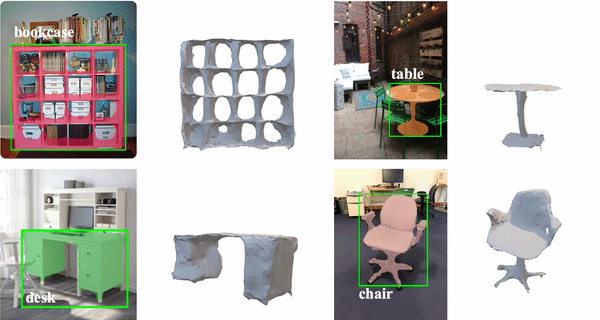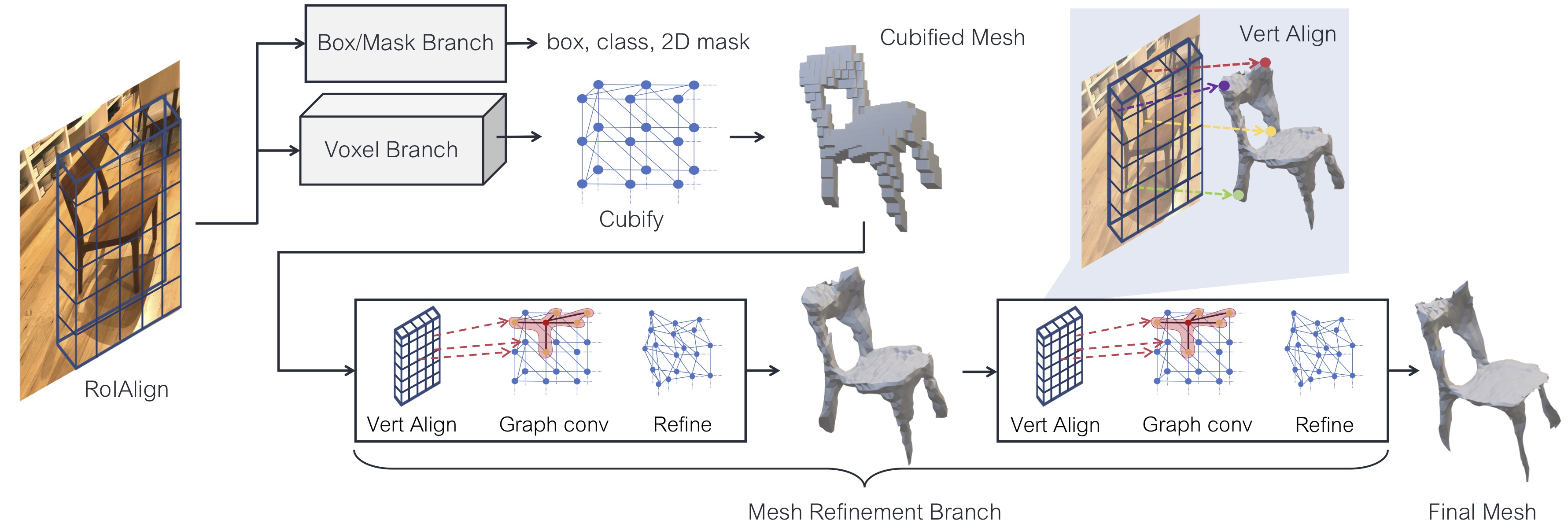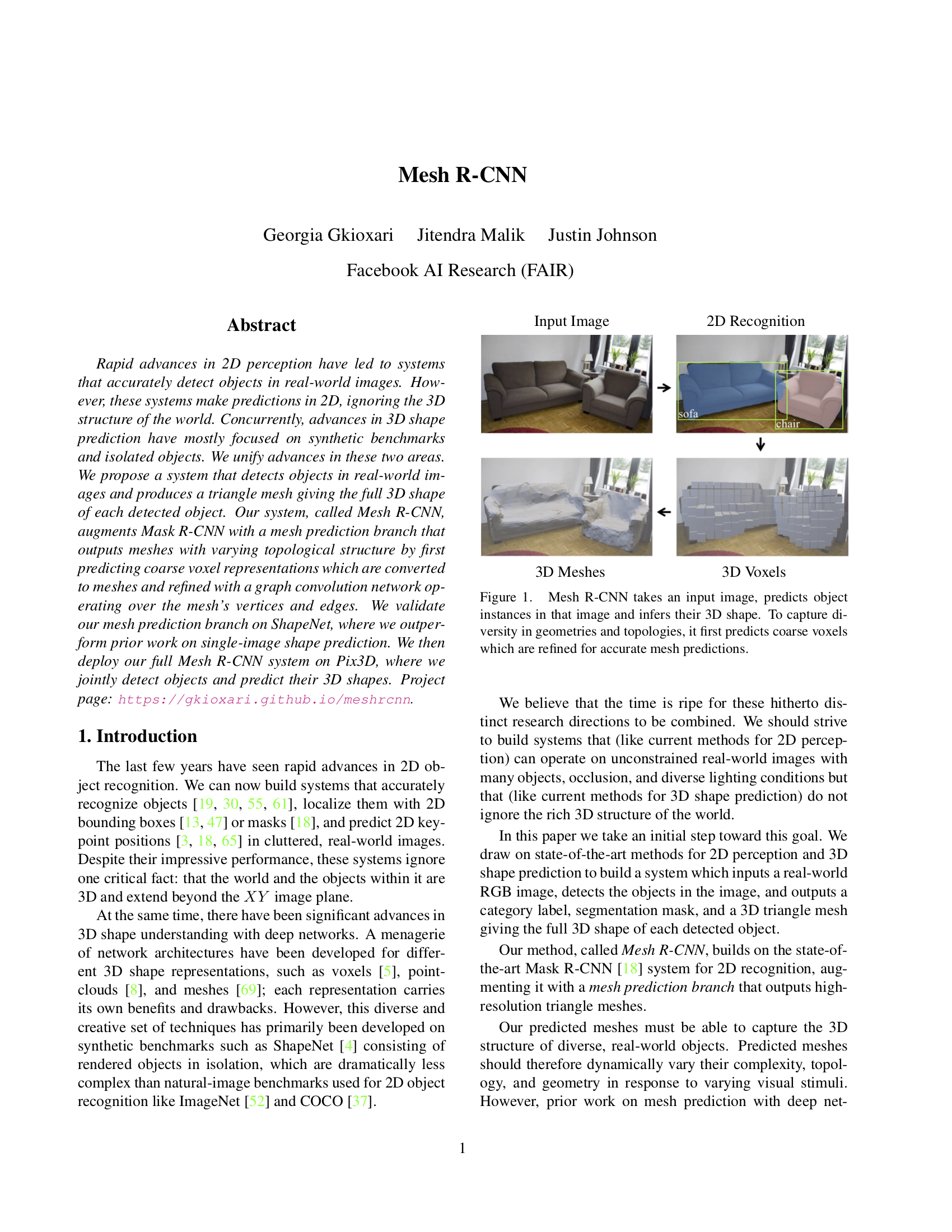Mesh R-CNN
|
|
|
|
|
|
|



|
|
|
|
|
|
|



Rapid advances in 2D perception have led to systems that accurately detect objects in real-world images. However, these systems make predictions in 2D, ignoring the 3D structure of the world. Concurrently, advances in 3D shape prediction have mostly focused on synthetic benchmarks and isolated objects. We unify advances in these two areas. We propose a system that detects objects in real-world images and produces a triangle mesh giving the full 3D shape of each detected object. Our system, called Mesh R-CNN, augments Mask R-CNN with a mesh prediction branch that outputs meshes with varying topological structure by first predicting coarse voxel representations which are converted to meshes and refined with a graph convolution network operating over the mesh's vertices and edges. We validate our mesh prediction branch on ShapeNet, where we outperform prior work on single-image shape prediction. We then deploy our full Mesh R-CNN system on Pix3D, where we jointly detect objects and predict their 3D shapes.

 |
Gkioxari, Malik, Johnson. Mesh R-CNN. In ICCV 2019. [bibtex] |
We would like to thank Kaiming He, Piotr Dollar, Leonidas Guibas, Manolis Savva and Shubham Tulsiani for valuable discussions. We would also like to thank Lars Mescheder and Thibault Groueix for their help.
Contact: Georgia Gkioxari